Eczema is a medical term used to describe a group of conditions that cause the skin to get inflamed. Atopic dermatitis is the most common form of eczema.
Eczema is Common
It is commonly accompanied by other allergic conditions such as hay fever or asthma. In the United States alone, 3% of the adult and children population as well as 10% to 20% of infants suffer from eczema. In most cases, infants with eczema outgrow the skin condition by the age of 10. Other people, however, continue to suffer from the symptoms for the rest of their life. The good news is that the symptoms of eczema can be controlled by using the right medication and following some easy lifestyle fixes. Atopic eczema can have physical, psychological and social effects both on children and their families. Parents often feel frustrated when caring for a chronic skin condition that disrupts family life. The child is often restless, needs to be prevented from scratching, has disturbed nights and creates extra housework (washing, vacuuming and dusting). Siblings may also be affected, as the extra attention the child with eczema receives can make them feel jealous or rejected. Children may miss school or school activities (such as swimming) due to a flare of their eczema. They may lack concentration in the classroom as they are itching, or sleepy because of the effect of antihistamines or lack of sleep. The best way to learn about the wet wrap technique and the products required for the process is through consultation with your healthcare professional or visit our FAQS
What Are The Symptoms Of Eczema?
Eczema can affect any area of the body. Regardless of where you develop the skin condition, it’s almost a guarantee that it will be very itchy. In some cases, the itching can begin even before the rash appears. Normally, the rashes appear on the face, hands, feet, back of knees and wrists. The affected areas typically look very dry and scaly. Those with fair skin may find the affected areas to be reddish at first and then turn brown. Dark-skinned individuals, meanwhile, may have eczema that is either lighter or darker than the rest of their skin.
What Causes Eczema?
Experts have yet to determine the exact cause of eczema. It is widely thought, however, that the condition is a result of an overactive response by the immune system when exposed to an irritant. This response is thought to be the cause of the different symptoms of eczema. Studies also show that eczema is more common among individuals with a family history of allergies or asthma. People suffering from eczema also have different triggers for their flare-ups. Some people get an itchy rash after getting in contact with a rough material. There are also those who experience flare-ups when suddenly switching from a hot environment to a cold one, or vice versa. For others, allergens such as harsh soaps, detergents and animal dander are their triggers. Stress is also known to make the symptoms of eczema worse.
How Is Eczema Treated?
A medical care provider can easily diagnose eczema just by looking at your skin. He may also ask a few questions to 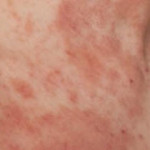 confirm the diagnosis. Allergy tests may be performed to determine offending substances and triggers, especially among infants and children. After diagnosis, the doctor usually recommends different forms of treatment. The goal is to relieve itching. This is because the more you scratch, the higher the chances of introducing bacteria to your skin, which ultimately leads to infection. Since the disorder causes the skin to become dry, flaky and itchy, creams and lotions are usually suggested. These products are best used when the skin is damp so as to maximize the moisture in the skin. The doctor may also recommend prescription ointments and creams containing corticosteroid to help reduce inflammation. Antihistamines may also help relieve severe itching. In case the area gets infected, the doctor may prescribe antibiotics to ward off the infection-causing bacteria.
confirm the diagnosis. Allergy tests may be performed to determine offending substances and triggers, especially among infants and children. After diagnosis, the doctor usually recommends different forms of treatment. The goal is to relieve itching. This is because the more you scratch, the higher the chances of introducing bacteria to your skin, which ultimately leads to infection. Since the disorder causes the skin to become dry, flaky and itchy, creams and lotions are usually suggested. These products are best used when the skin is damp so as to maximize the moisture in the skin. The doctor may also recommend prescription ointments and creams containing corticosteroid to help reduce inflammation. Antihistamines may also help relieve severe itching. In case the area gets infected, the doctor may prescribe antibiotics to ward off the infection-causing bacteria.
How can I manage eczema ?
The dry skin associated with eczema is caused by a lack of natural moisture within the skin. Compared to normal 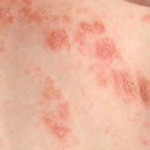 skin, the skin of an eczema sufferer may have reduced water binding capacity, higher water loss and decreased water content.8 This can result in dry scaly skin. To help ease this condition, the skin needs to be re-hydrated. Typical therapy for re-hydration is use of emollients. These can be added to bath water and applied directly to the skin. This will keep the skin moisturized and help prevent irritation and itching. One very effective use of emollients is as part of the wet wrapping technique. More therapeutic options are needed to help address the increasing number of children suffering from eczema. The cases of atopic dermatitis have more than doubled since the 1970s. Eczema is a very common skin disorder across the globe, and those in poor nations tend to suffer worst as they can’t afford medical treatment that help relieve eczema symptoms. It is not uncommon to hear stories of children unable to sleep at night, endlessly scratching different areas of their body until they bleed. Such a situation isn’t only painful for the child but for parents as well. On top of all this, patients with eczema usually live a reclusive lifestyle as they are too embarrassed to go out with thick and scaly patches on their skin. Fortunately, a new research has found an alternative treatment for eczema that can prove to be extremely effective at reducing symptoms and providing long-lasting benefits. This treatment is called wet wrap therapy. It was first described by researcher Noreen Nicol in 1987. The therapy involves wrapping the patient in wet clothing, which theoretically makes the skin heal better and quicker. This has been tested recently and results were published in the Journal of Allergy and Clinical Immunology. According to the research, wet wraps have profound effects when it comes to treating eczema. Wet wrap therapy was performed on 72 children for two weeks. The researchers applied wet wraps either two or three times daily, depending on how severe the condition of the patient was. The therapy was later tapered down to only treat the affected areas. Results show that all the children who underwent the treatment experienced a 71% reduction in symptoms on average. More interestingly, they were able to maintain healthy skin a full month after the therapy. It is important to note that this wasn’t due to the use of any medications typically prescribed to eczema patients. This means children with eczema can stop taking oral medications after undergoing wet wrap therapy. The wet wraps work by healing the skin barrier and helping it recover. Based on the research, this can have a long-lasting effect. By fixing the skin barrier, you make the medications you’re using more effective. This means you can do not have to use the more intense medications just to experience the same benefits. A lower potency medicine can prove to work just as well when combined with wet wrap therapy.
skin, the skin of an eczema sufferer may have reduced water binding capacity, higher water loss and decreased water content.8 This can result in dry scaly skin. To help ease this condition, the skin needs to be re-hydrated. Typical therapy for re-hydration is use of emollients. These can be added to bath water and applied directly to the skin. This will keep the skin moisturized and help prevent irritation and itching. One very effective use of emollients is as part of the wet wrapping technique. More therapeutic options are needed to help address the increasing number of children suffering from eczema. The cases of atopic dermatitis have more than doubled since the 1970s. Eczema is a very common skin disorder across the globe, and those in poor nations tend to suffer worst as they can’t afford medical treatment that help relieve eczema symptoms. It is not uncommon to hear stories of children unable to sleep at night, endlessly scratching different areas of their body until they bleed. Such a situation isn’t only painful for the child but for parents as well. On top of all this, patients with eczema usually live a reclusive lifestyle as they are too embarrassed to go out with thick and scaly patches on their skin. Fortunately, a new research has found an alternative treatment for eczema that can prove to be extremely effective at reducing symptoms and providing long-lasting benefits. This treatment is called wet wrap therapy. It was first described by researcher Noreen Nicol in 1987. The therapy involves wrapping the patient in wet clothing, which theoretically makes the skin heal better and quicker. This has been tested recently and results were published in the Journal of Allergy and Clinical Immunology. According to the research, wet wraps have profound effects when it comes to treating eczema. Wet wrap therapy was performed on 72 children for two weeks. The researchers applied wet wraps either two or three times daily, depending on how severe the condition of the patient was. The therapy was later tapered down to only treat the affected areas. Results show that all the children who underwent the treatment experienced a 71% reduction in symptoms on average. More interestingly, they were able to maintain healthy skin a full month after the therapy. It is important to note that this wasn’t due to the use of any medications typically prescribed to eczema patients. This means children with eczema can stop taking oral medications after undergoing wet wrap therapy. The wet wraps work by healing the skin barrier and helping it recover. Based on the research, this can have a long-lasting effect. By fixing the skin barrier, you make the medications you’re using more effective. This means you can do not have to use the more intense medications just to experience the same benefits. A lower potency medicine can prove to work just as well when combined with wet wrap therapy.
What are wet wraps?
Wet wraps are washable, reusable tubular bandages (Tubifast) which children can wear either over the whole body or on whichever part is affected by eczema. Wet wrapping involves applying a warm, wet Tubifast tubular bandage over liberal amounts of emollient (and steroid creams on the advice or under the supervision of a physician). A dry layer is put over the wet layer to protect normal clothing, which is worn over the top.
How do wet wraps work?
The wet layer of bandage helps moisturizers to be deeply, rather than superficially absorbed, resulting in a longer-lasting moisturizing effect. (Emollients normally only work for 1-2 hours.) Wet wraps therefore apply liberal amounts of moisturizers to the skin, keeping it supple and allowing more restful nights and freer movement Where steroids are being used on the advice of a GP, wet wraps can cause enhanced steroid absorption. This means that steroids can reach both the superficial and deep inflammation, allowing greater control of the 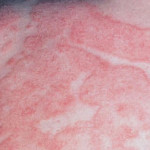 eczema. This may mean milder steroid creams could be used and the skin may even progress to a stage where steroids may no longer be necessary. Cooling of the skin as the water gradually evaporates from the bandages can help reduce itching, a key objective in managing eczema and making the sufferer more comfortable. Not only is the itch reduced, but Wet Wraps also help promote skin healing as the skin is protected (by the bandages) from the damage caused by itching and scratching. The result of the above is that by using wet wraps, hospital admissions for a chronic condition may be reduced or prevented.
eczema. This may mean milder steroid creams could be used and the skin may even progress to a stage where steroids may no longer be necessary. Cooling of the skin as the water gradually evaporates from the bandages can help reduce itching, a key objective in managing eczema and making the sufferer more comfortable. Not only is the itch reduced, but Wet Wraps also help promote skin healing as the skin is protected (by the bandages) from the damage caused by itching and scratching. The result of the above is that by using wet wraps, hospital admissions for a chronic condition may be reduced or prevented.
The major benefits of wet wrapping for the child and the parents
The Child
Reduces itching
Prevents scratching
Sleep improved
Happier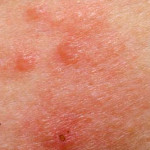
Steroid usage reduced
Prevents hospital admission for chronic condition
The Parents
In control of child’s eczema
Sleep improved
Happier family
Can You Do Wet Wrap Therapy At Home?
There are some who say that wet wrap therapy shouldn’t be done at home just yet because further studies n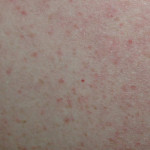 eed to be conducted and that overdoing it can actually exacerbate the disorder. Others, however, say parents should feel free to do the therapy at home. Unfortunately, this can be very challenging especially when done on infants. Finding the items to use as wet wraps for eczema can be a bit tricky. In most cases, wet dressings or gauze are used to wrap different areas of the body. Other items that are commonly used in wet wrap therapy include gloves, socks and a onesie. Parents who have done this before know that wrapping these items on children or infants can take several minutes. A solution to this has been introduced with the release of specialized clothing designed entirely for the purpose of administering wet wrap therapy. You can now find full body suits, tops, bottoms and sleeves for problem areas such as the back of knees, wrists and ankles. These are moistened with the prescribed topical medication for eczema and then slipped onto the infant. They also help prevent the child from scratching, allowing the affected areas to heal quicker.
eed to be conducted and that overdoing it can actually exacerbate the disorder. Others, however, say parents should feel free to do the therapy at home. Unfortunately, this can be very challenging especially when done on infants. Finding the items to use as wet wraps for eczema can be a bit tricky. In most cases, wet dressings or gauze are used to wrap different areas of the body. Other items that are commonly used in wet wrap therapy include gloves, socks and a onesie. Parents who have done this before know that wrapping these items on children or infants can take several minutes. A solution to this has been introduced with the release of specialized clothing designed entirely for the purpose of administering wet wrap therapy. You can now find full body suits, tops, bottoms and sleeves for problem areas such as the back of knees, wrists and ankles. These are moistened with the prescribed topical medication for eczema and then slipped onto the infant. They also help prevent the child from scratching, allowing the affected areas to heal quicker.
How often should you wet wrap?
Wet wrapping will help to control a child’s eczema, but there are no hard-and-fast rules about how long the bandages should stay on or how frequently they should be applied. Normally a dermatological healthcare professional should be consulted for advice. If the skin is particularly bad, you could wet wrap every day and overnight until it settles down. Then you could wrap about three times a week. As you get familiar with the process, you’ll discover the correct intervals to keep the eczema under control.
Additional Tips To Prevent Flare-Ups
Using wet wraps for eczema has been proven to be effective at reducing symptoms and providing long-lasting benefits in terms of healing the skin barrier. In order to further improve the condition, however, you must ensure that you make some quick lifestyle fixes that help minimize flare-ups.
1. Keep skin moisturized at all times.
2. Avoid sudden temperature or humidity changes.
3. Avoid excessive sweating.
4. Find ways to reduce stress.
5. Keep a list of triggers and make it a point to avoid them.
Eczema can prove to be one frustrating skin condition to deal with, but you can win the battle by knowing the right treatment to use and practicing preventative measures. It is recommended to talk to the doctor and seek guidance on how to administer wet wrap therapy.
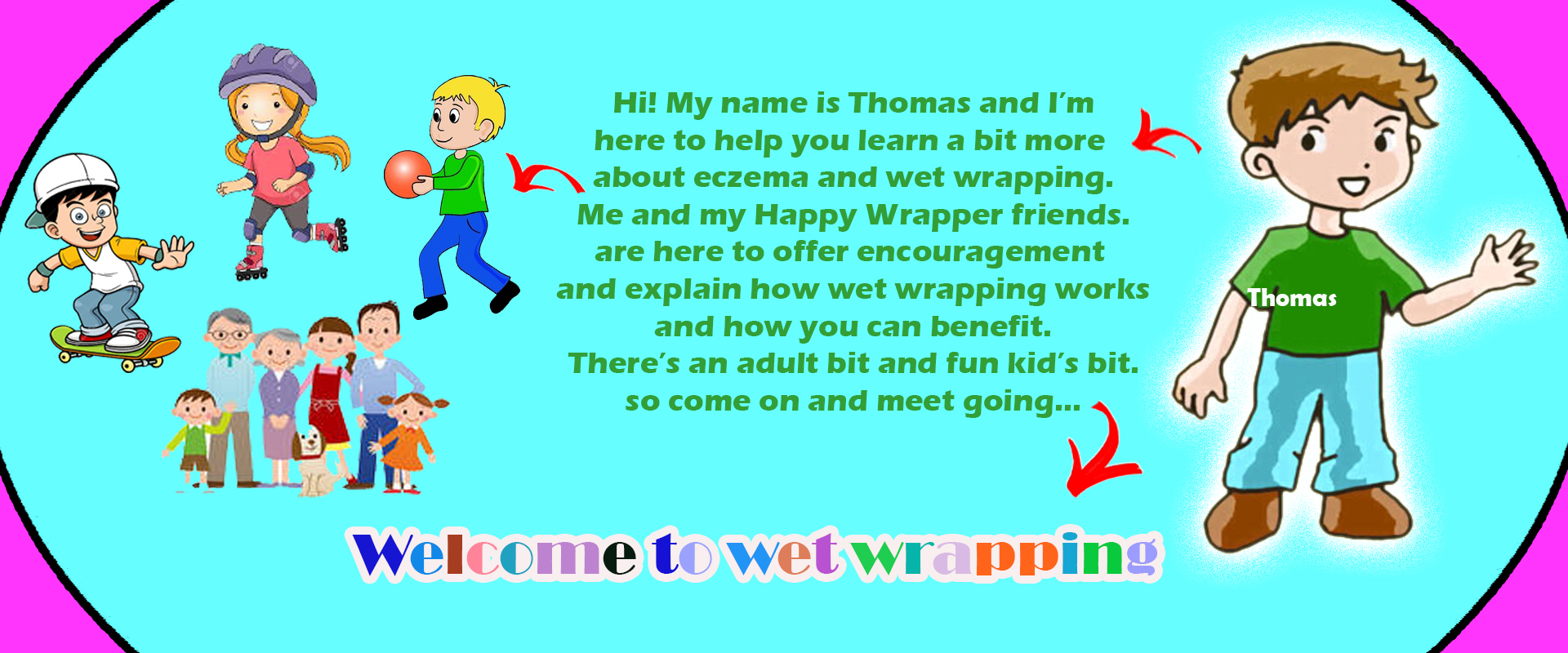
Comments are closed.